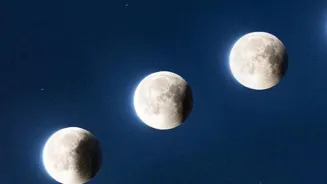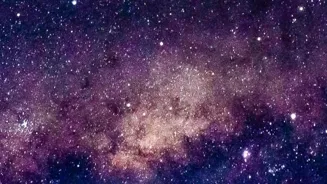Unravel the Phases of the Moon: An Insightful Journey into Lunar Transformations. Dive in to demystify our celestial companion!
The moon, our closest celestial buddy, has been captivating us Indians for
ages. From ancient stories told by grandmothers to astronomical calculations by Aryabhata, its presence is woven into our culture.
But how many of us actually understand its changing shapes, the phases that make it look like a sliver one night and a full disc the next? Let's take a simple journey to understand these lunar transformations.
The moon doesn't produce its own light. Instead, it reflects the sunlight falling on it.
As the moon orbits the Earth, the amount of sunlight we see reflected changes. This change in the visible illuminated surface is what creates the lunar phases. It's all about perspective, you see! Imagine holding a ball in front of a lamp and walking around it.
The amount of the ball lit by the lamp that you can see changes as you move. That is similar to the way the moon phases work. The sun will be a great source of light.
New Moon: The Invisible Start
The lunar cycle begins with the New Moon. During this phase, the moon is between the Earth and the Sun. Because of this position, the side of the moon facing us isn't lit up by the sun. It appears dark and is usually invisible to the naked eye.
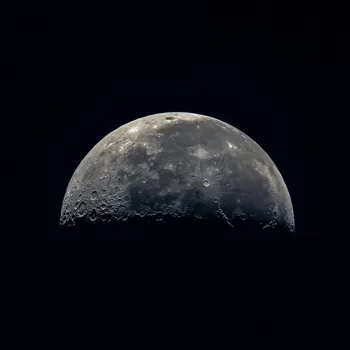
It is important to note that the new moon is still in the sky, but we just cannot see it. It is there marking the beginning of a fresh lunar adventure for us. Even though we cannot see it, the new moon is important in Hindu traditions and festivals.
This phase is significant in many Indian calendars, often marking the start of a new month. Some communities consider the New Moon auspicious for new beginnings and setting intentions. It's a time for introspection and looking ahead. Think of it as the reset button of the lunar cycle.
Some people might not perform any new task in this period. The moon has a great impact on the Earth. Many scientist suggests that the moon is the only reason why the Earth is in its axis and is not moving.
Waxing Crescent: A Delicate Smile
As the moon moves along in its orbit, a tiny sliver becomes visible. This is the Waxing Crescent phase. "Waxing" means the moon is getting bigger or increasing in illumination. This delicate crescent appears shortly after sunset and gradually grows larger each night.
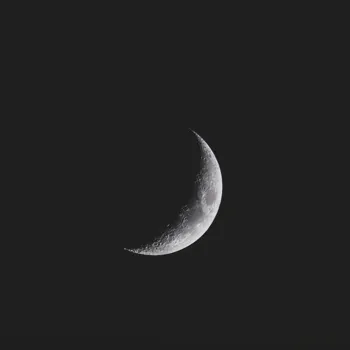
Look for it low in the western sky after the sun goes down. This is what will mark the start of the various phases that will be changing in the upcoming days.
It's often a beautiful sight, a faint smile in the evening sky.
Farmers in some parts of India traditionally use the appearance of the waxing crescent as a sign to start planting certain crops. It serves as a lunar calendar reminding them of the right time for sowing seeds. Think of it as nature's subtle signal.
Moreover, many people regard this phase as an important observation period. They will keep a close track as it moves to the next orbit.
First Quarter: Halfway There
About a week after the New Moon, we reach the First Quarter. At this stage, exactly half of the moon's face appears illuminated. It rises around noon and is highest in the sky at sunset. It is the first half of the moon's journey.
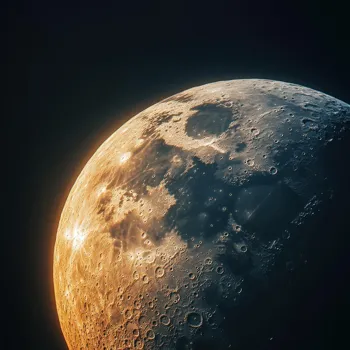
Some people also refer to it as the half amount of sunlight that we get to see from the moon. This is the stage where we start to see more light from the moon. This is the actual halfway mark of the moon.
Don't confuse "quarter" with the shape! It doesn't mean we see a quarter of the moon.
It refers to the moon being a quarter of the way through its orbit around the Earth. The first quarter is a very bright stage where light is quite intense. It remains visible for nearly half of the night. It acts as the major transit point for future changes, which is the hallmark of this phase.
Many people await to experience this moment to plan their next steps.
Waxing Gibbous: Growing Brighter
Between the First Quarter and the Full Moon, we see the Waxing Gibbous phase. "Gibbous" simply means more than half of the moon is lit up. The illuminated portion keeps on adding up. It's on its way to becoming a full moon. It rises in the late afternoon and stays visible for most of the night.
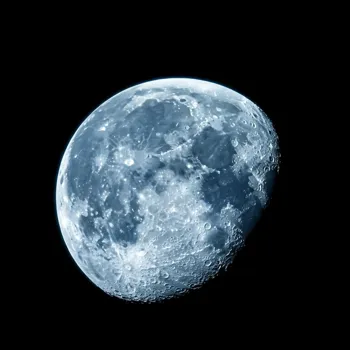
This phase is a sign of fullness when nearly all of the moon is illuminated.
As the moon progresses through the gibbous phase, it gets brighter and brighter.
Many Indians use the light from the waxing gibbous moon to extend work hours at night, particularly in agriculture regions where electricity might be limited. It is not always about stories, myth or legend; it also has practical usage.
In short, this phase helps people to get things done even at night with all of its brightness.
Full Moon: The Lunar Glow
The Full Moon is the most spectacular phase. The entire face of the moon is illuminated, shining brightly in the night sky. It rises around sunset and sets around sunrise, providing maximum moonlight throughout the night. Now, this is the party for the moon-lovers.
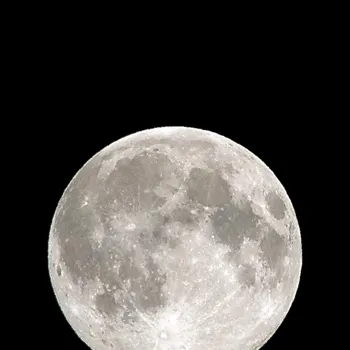
This phase signifies the brightest period where everyone can enjoy and feel the presence of nature. It is celebrated in all cultures of the world.
In India, the Full Moon is often associated with festivals and religious observances.
For example, Guru Purnima, a day dedicated to honoring teachers, falls on a Full Moon day. Many people believe that the Full Moon has a significant impact on their moods and emotions. This belief is the most prevalent and widely regarded in most parts of the country.
The celebrations are usually very grand and people enjoy this phase.
Waning Gibbous: Slowly Dimming
After the Full Moon, the moon starts to "wane," meaning it decreases in illumination. The Waning Gibbous phase is when the moon is still more than half illuminated, but gradually shrinking. It rises after sunset and appears lower in the sky, as the nights get darker.
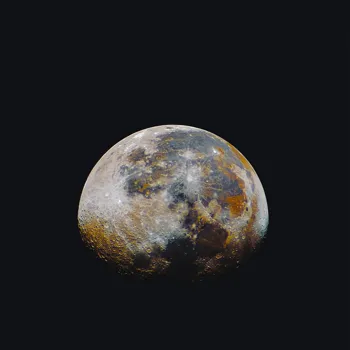
As they watch it change shape, it will be the last time to seize the light that it emits before it turns dark.
This phase is a transition period. The power of the full moon is slowly fading away.
People who believe in lunar influences suggest this is a good time to release things that no longer serve you and prepare for a period of introspection. The intensity starts to decline after its peak when its power is at its most. It's a time for letting go.
This is also the time where people assess the progress that they have made.
Third Quarter: Another Half Moon
About a week after the Full Moon, we reach the Third Quarter (also sometimes called Last Quarter). Again, half of the moon is illuminated, but this time it's the opposite half from the First Quarter. It rises around midnight and is highest in the sky at sunrise.
You can usually see it in the early morning hours. Those who are early birds are the ones who get to see it in this phase.
Just like the first quarter, the "quarter" doesn't refer to the shape. It means the moon is three-quarters of the way through its orbit.
Astrologers sometimes associate this phase with reflection and evaluation. It is suggested to look back on recent events and see what lessons you can learn from them. In short, this phase focuses on evaluation and retrospection of past events. This also marks the turn of a new direction.
Waning Crescent: A Fading Smile
The final phase before the New Moon is the Waning Crescent. It's a thin crescent shape that appears in the early morning sky, just before sunrise. It's a faint, delicate sight, much like the Waxing Crescent but on the opposite side of the moon.
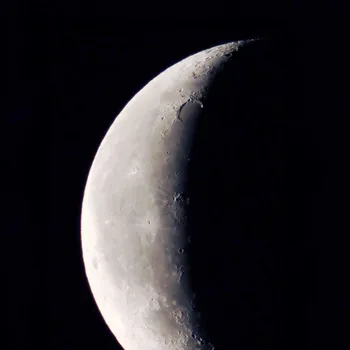
This is the last time when the moon is shining at its bare minimum. It is slowly crawling to darkness.
This phase is often seen as a symbol of closure and release. It is a time to wrap up loose ends and prepare for the new lunar cycle. It suggests completion.
It is the moment to close all doors before starting new ones. It is considered a time to complete pending works to prepare oneself. The fading smile in the sky suggests peace and calmness before beginning new things.
From Crescent to Crescent: The Lunar Cycle
The whole cycle from one New Moon to the next takes about 29.5 days. That's what we call a lunar month. The phases repeat themselves constantly, marking the passage of time, and influencing our traditions and beliefs. The moon continues to orbit with its constant shift.
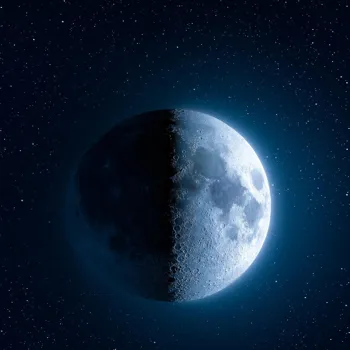
Its ever-changing phases are closely documented by all the scientists who work diligently to understand.
So, the next time you look up at the moon, take a moment to appreciate its beauty and remember the story it tells. It is a reminder of the constant change and the cyclical nature of life itself.
From the darkest new moon to the brightest full moon, it tells a story that has been unfolding for millions of years. Remember also to teach your kids about these things to enhance the awareness.
